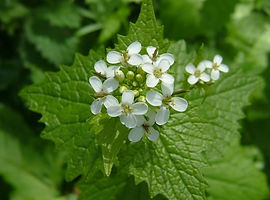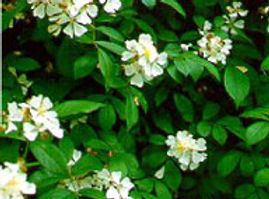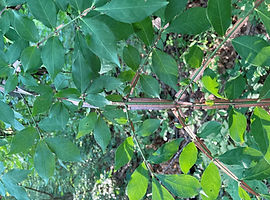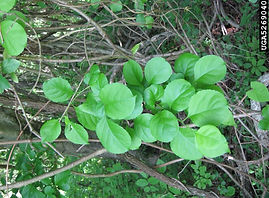
Invasive Species
Pictures: Autumn Olive. Scroll down for working group information and resources!
The news of Invasive Species is spreading!
But...
What is an Invasive Species?
Invasive species are organisms that are...
not native to the ecosystem.


likely to cause economic or environmental harm.
Garlic Mustard
Multi-flora Rose

Barberry
likely to cause harm to human health.
These organisms are the most aggressive of the non-native species introduced in the US and can cause major changes in the areas they inhabit.
Invasive Species have detrimental impacts on our natural areas.
They take over natural areas, destroying habitat for native plants. Invasives alter the habitat of our wildlife and pollinators, eliminating native cover and food. Streams, wetland, and cropland are all bring effected. Removal of invasive species costs billions of dollars each year.

What can you do?
* Learn about what plants are impacting our region. *
* Avoid planting invasive species on your property. *
* Actively work to remove invasive plants. *
If we work together, we can make a dent!
Resources

The St. Joseph/Marshall County Invasive Plant Partnership is a CISMA, or Cooperative Invasive Species Management Area. We work in both counties to engage the community about the need for invasive species control. SMIPP works with partners to address invasive species problems through education events, Weed Wrangles, and more.
We host educational events and workdays through the year. Sign up for our Email Newsletter or follow us on Facebook for dates and other information!
SMIPP Leadership:
Misty Sorchevich, Co-Leader for St. Joseph County
Jodie Overmyer, Co-Leader for Marshall County
AJ Popovic, SICIM Regional Specialist for Northwest Indiana (bio)
Common Offenders
Here's some of the invasive plants commonly seen in our area and links to more information.



Japanese Honeysuckle

Callery Pear

Japanese Barberry
Garlic Mustard

Multi-Flora Rose

Chinese Silvergrass
Tree-of-Heaven

Burning Bush

Round-leaf Bittersweet

AlterNATIVES
Learn native alternatives to these popular landscape plants.

Periwinkle
